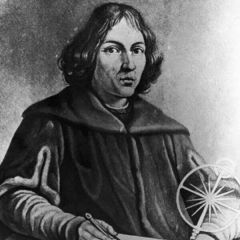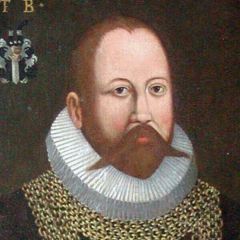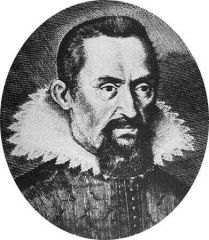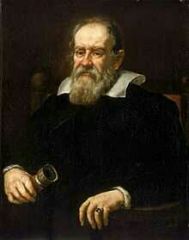![]()
![]()
![]()
Use LEFT and RIGHT arrow keys to navigate between flashcards;
Use UP and DOWN arrow keys to flip the card;
H to show hint;
A reads text to speech;
5 Cards in this Set
- Front
- Back

Ptolemy |
A Greek astronomer who's theory was that the Earth was in the center. |
|

Copernicus |
A Polish astronomer who theory was that the sun was in the center |
|

Tycho Brahe |
Used very large, vast tools to record extremely precise observations of the planets and stars that helped future astronomers. He used multiple clocks and housekeepers |
|

Johannes Kepler |
Assistant to Tycho Brahe. When Brahe died a year later, he continued working with Brahe's data and concluded with 3 laws of planetary motion that are still used today. |
|

Galileo |
One of the first people to use a telescope for astronomical observation. When he looked at the Moon through the telescope, he discovered mountains, valleys and craters. (Everyone at that time thought the Moon was a perfectly round ball.) This astronomer proved that it was not.
He noticed that the planets Mercury and Venus pass through phases just like the Moon. The only way they could do that is if they circled the Sun, and not the Earth.And most importantly of all, he discovered four moons around Jupiter. This meant that everything in the Universe did NOT circle the Earth... because he could clearly see four moons which circled Jupiter.
In addition to these discoveries, this astronomer also discovered that everything falls at the same speed. For instance, If you jumped off a bridge at the same time as an elephant you would both hit the water at the exact same time. To test this theory, he did not throw an elephant off a bridge, instead, he dropped two round balls off the Leaning Tower of Pisa. One was very heavy, and one was light. Both hit the ground at the same time.
The most important thing about all of his theories was that he was not guessing. He could clearly prove to anyone that what he had discovered was true. |

